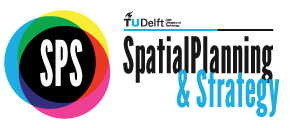Ryan Gravel
Ryan Gravel’s 1999 master’s thesis from Georgia Tech in Architecture and City Planning was the original vision for the ambitious Atlanta Beltline – a 22-mile transit greenway that transforms a loop of old railroads with light-rail transit, parks and trails to generate economic growth and protect quality-of-life in 45 neighborhoods throughout the central city. Eight years of his subsequent work as a volunteer and later in the nonprofit and government sectors was critical to the project’s success, which is now a $2+ billion public-private initiative in the early stages of implementation.
Now practicing Urban Design at Perkins+Will, Ryan is Design Manager for the firm’s Beltline Corridor Design contract, which will determine the character and design details for the trail, transit guideway, stations, access points, public spaces, public art, streetscapes, lighting, plants and materials. Ryan speaks internationally about the Beltline, and has been recognized for his accomplishments, including the Atlanta Urban Design Commission’s highest award in 2007 and Esquire Magazine’s “Best and Brightest” in 2006.
Atlanta Beltline – Short Description
The Atlanta Beltline is an infrastructure framework around which the urban core of Atlanta will grow by as many as 100,000 people. This 22-mile loop of mostly abandoned railroads is being transformed into a transit greenway – a linear park with streetcars, bicycle and pedestrian paths that will connect over 40 diverse neighborhoods, as well as city schools, historic and cultural sites, shopping districts and public parks. It organizes adjacent urban land for transit-oriented development, expands transit service within the urban core, and connects various parts of an emerging regional trail system. The original vision has expanded to include over 1,000 acres of new parks, the largest affordable housing initiative in the city’s history and perhaps the longest and most unique arboretum in the country.
Atlanta Beltline
Atlanta has been one of the country’s most successful cities over the last half-century, leveraging an expansive interstate highway system to spread five million people over 8,300 square miles. But the costs required to maintain and expand this system across such a vast territory are no longer palatable – Atlanta is quite literally choking on its own success. Fortunately, there are a few signs that Atlanta is beginning to change the way it envisions its future, reconstructing a new city around a more sustainable kind of infrastructure. No such sign is more promising than the Atlanta Beltline.
The Atlanta Beltline is an infrastructure framework around which the urban core of Atlanta will grow by as many as 100,000 people. This 22-mile loop of mostly abandoned railroads is being transformed into a transit greenway – a linear park with streetcars, bicycle and pedestrian paths that will connect over 40 diverse neighborhoods, as well as city schools, historic and cultural sites, shopping districts and public parks. It organizes adjacent urban land for transit-oriented development, expands transit service within the urban core, and connects various parts of an emerging regional trail system. The original vision has expanded to include over 1,000 acres of new parks, the largest affordable housing initiative in the city’s history and perhaps the longest and most unique arboretum in the country.
One of the leading concepts of the Atlanta Beltline is economic development. By leveraging the Beltline to organize its population growth along greenways and transit, Atlanta will generate a paradigm shift in its real estate markets, altering the dynamics of which places are considered more desirable and therefore better positioned for the future. Over 4,000 acres of underutilized industrial land follow these railroads around the city, offering prime locations for new mixed-use, mixed-income, medium-density districts in both some of Atlanta’s most desirable and most underserved communities. Over the next 20 years the Atlanta Beltline will become the city’s signature investment in a more economically and environmentally sustainable future. Estimates suggest it will generate over 30,000 new jobs and nearly 50,000 one-year construction jobs, as well as tens of thousands of new housing units and hundreds of thousands square feet of office space and retail.
While its physical transformation of the city cannot be understated, the Atlanta Beltline holds an even greater promise. It sets an example for how the rest of the region can move forward by offering an alternative to gridlocked highways and a lifestyle dependent on cars. By concentrating growth around a more affordable and sustainable kind of infrastructure, the Atlanta Beltline can support, protect, and enhance the quality of life for the city through the next several decades of dramatic regional transformation.
The Atlanta Beltline Corridor Design
In 2010, Atlanta Beltline Inc. hired Perkins+Will as prime, along with James Corner Field Operations as the design co-lead and 16 other sub-consultants to spearhead the Atlanta Beltline Corridor Design. With a phased implementation plan, some components are being implemented even as design work is ongoing.
The Corridor Design ensures that the Beltline’s implementation over time will deliver a functional, elegant, groundbreaking and cohesive urban design. It creates continuity and identity for the Beltline through infrastructure elements – the transit system and trail and their supporting infrastructure of stairs, ramps and signs. It generates experiential variety through an exciting sequence of landscapes originating from the historic and physical fabric of the city and amplified through planting, materials and lighting. The Corridor Design will establish core physical relationships between transit, trail and access points and embed supporting strategies like public art and signage. It will ensure that the grand vision is sustainable, efficient and affordable to build and operate. Finally, the Corridor Design will deliver the greatest promise of the Beltline: it will support, protect, and enhance the quality of life for the city of Atlanta through the next several decades of dramatic regional transformation.

